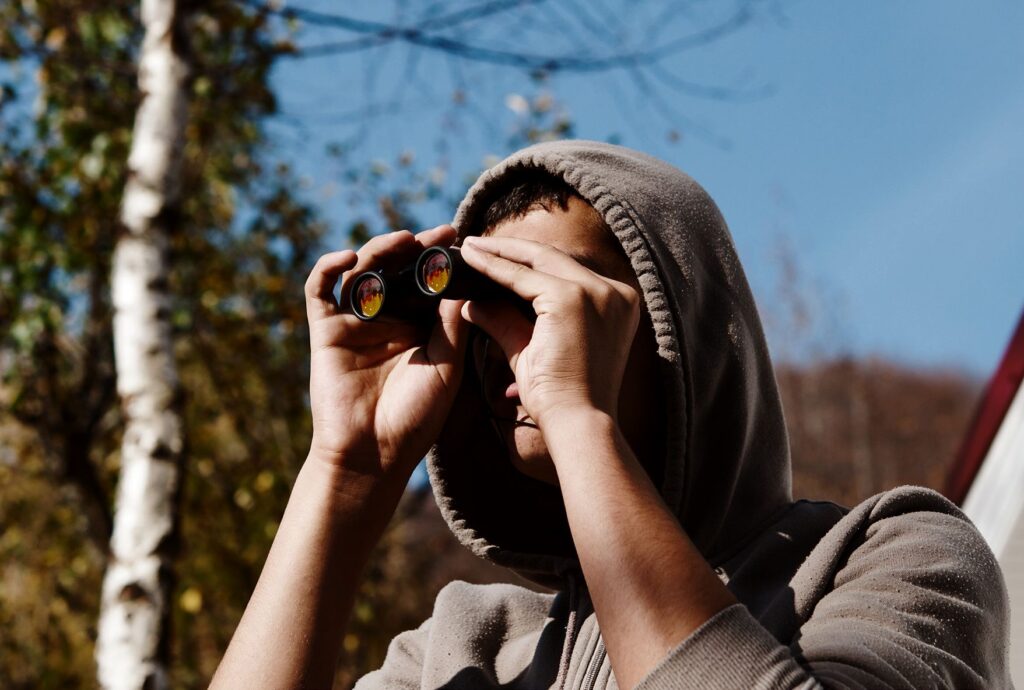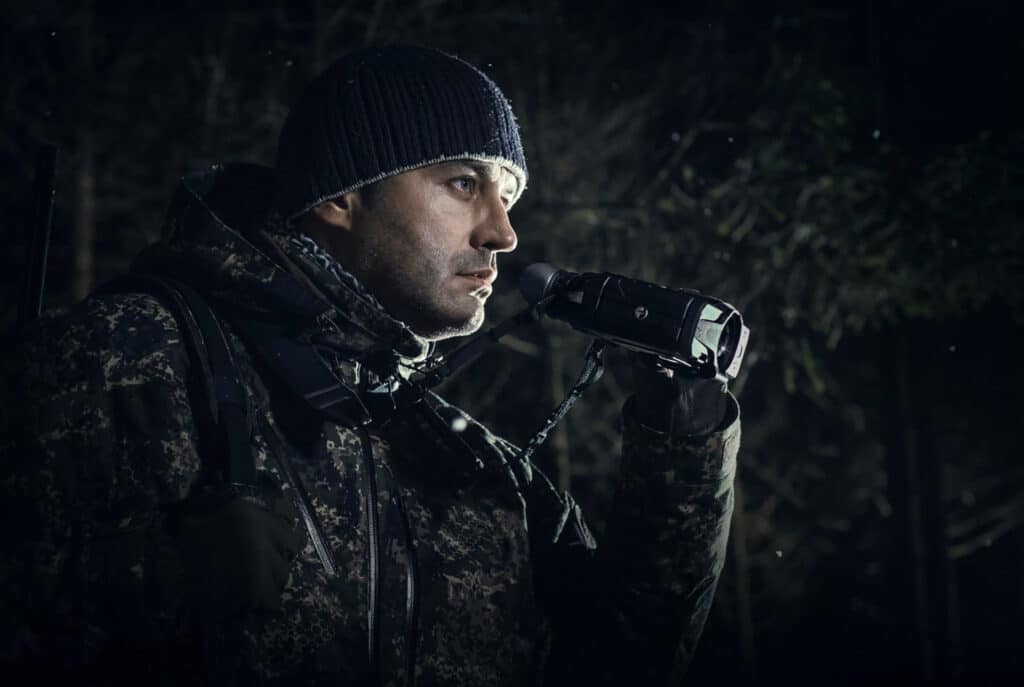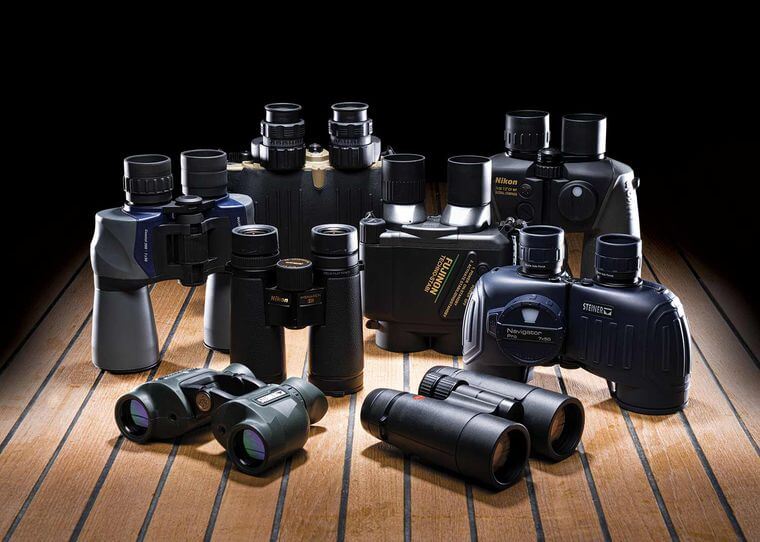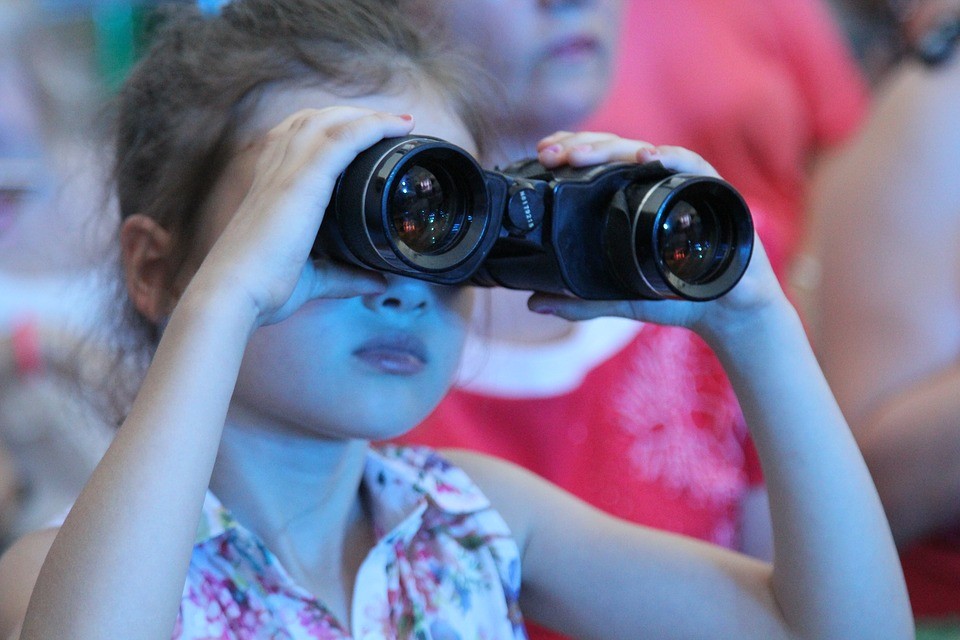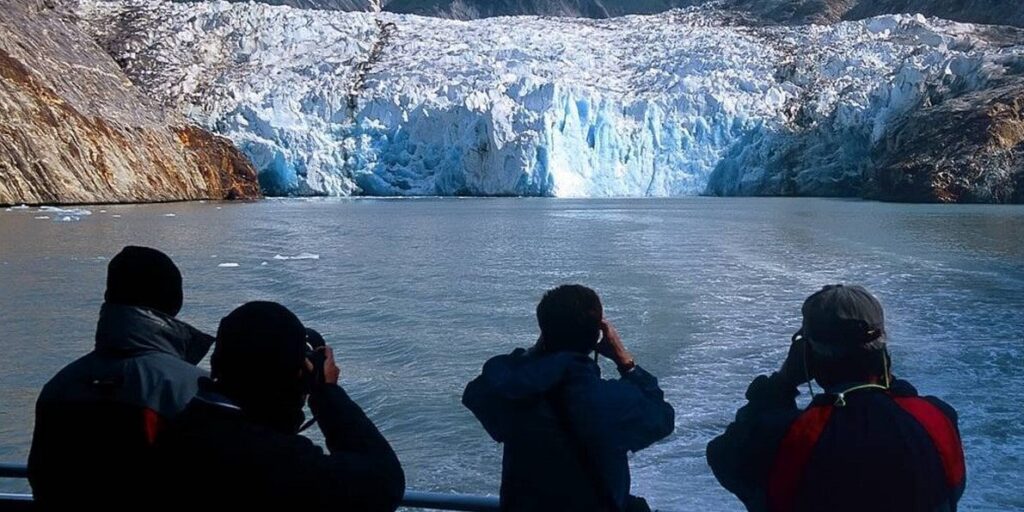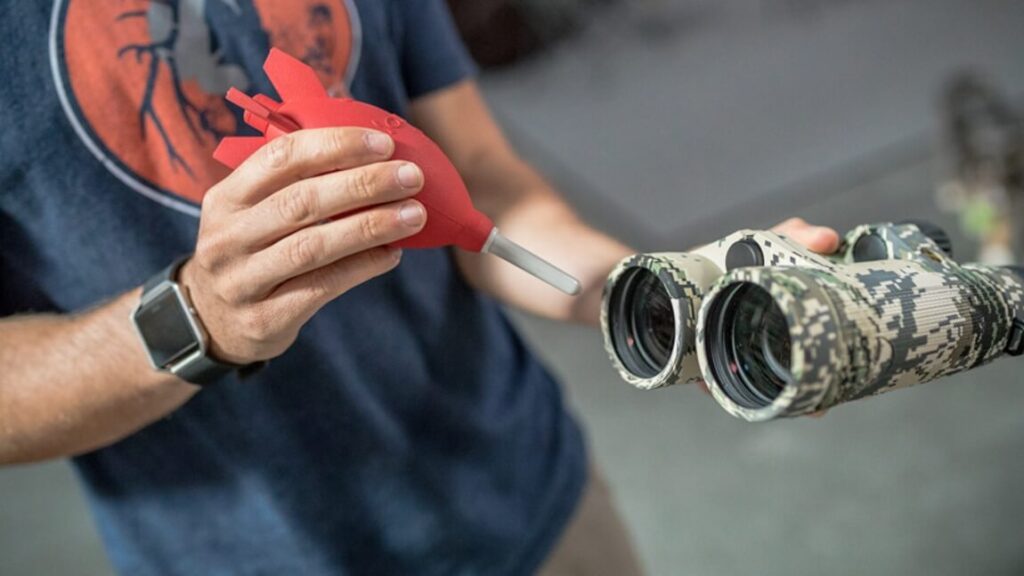

Wildlife watching can be a great way to relax and connect with nature. Of course, it’s important to keep your distance from wild animals – which is why it’s so important to have a high-quality pair of binoculars.
To help you find the best binoculars for wildlife viewing, we considered dozens of the top models on the market today. We considered features like weather resistance, which is critical for outdoor activities, weight, and features like adjustable eyecups. We also looked carefully at the prism system and field of view, which impact the quality of magnification you’ll be able to get from your binoculars. With all these factors in mind, we picked out the six best binoculars for spotting wildlife – read on to find out more about them!
Other features: fully multi-coated optics; 6.5’ close focus; twist-up eyecups; polycarbonate frame
The Celestron Nature DX binoculars provide an incredible value for the money. These 10x binoculars are ultra-compact thanks to a small 32 mm objective lens. While this does limit their ability to work well under low-light conditions, it also helps them achieve a smaller size and lighter weight than most other comparable binoculars we looked at.
Another thing that stands out about these binoculars is the prism system. The roof prism system is made with high-quality BAK4 glass, which offers an extremely strong image quality. The prism also has a phase change coating, which helps increase the amount of light that actually makes it to your eyes.
These binoculars have a handful of other helpful features, too. They are able to focus on objects that are as close as 6.5 feet away, making them perfect for looking at details on birds and other animals that you can get near. The polycarbonate frame is lightweight and durable, although it’s important to note that the body isn’t fully weather resistant. The eyecups are also removable, which is nice given that the eye relief is surprisingly short.
What we liked: The compact objective lens is a huge advantage for these binoculars. Thanks to that design, they weigh just 18 ounces and fit in a pocket. While you might not get great low-light performance, you’ll actually carry these binoculars with you every time you go outside since they’re so small.
What could be better: A longer eye relief would be helpful, especially for users who wear glasses. It’s nice that you can remove the eyecups to get closer to the lenses, but most comparable binoculars have eye relief of 18 mm or longer.
Other features: HD lens system and ED Glass; 90% light transmission; rotating lockable eyecups; waterproof and submersible; LotuTec protective coating; lightweight aluminum housing
If you’re an experienced wildlife spotter looking for a top-of-the-line pair of binoculars, the Zeiss Conquest HD is hard to beat. These binoculars are pricey, but they boast incredible optics that most competitors simply can’t match.
To start, they’re made with Zeiss glass. Zeiss has a multi-century reputation for high-quality glass. The Roof prism in these binoculars offers 90% light transmission, which means that you’ll be able to see clearly even in extremely low-light conditions.
The lenses are also protected with a LotuTec protective coating, so you don’t have to worry quite as much about scratches from regular use. Even better, Zeiss offers a five-year no-fault warranty so your binoculars are fully covered in case of an accident.
These binoculars are made with a lightweight aluminum body, although they still ring in at a weight 28 ounces. They’re also waterproof and fog-proof, which ensures that you can use them in any environment.
What we liked: While these binoculars offer the same 10x magnification and 42 mm objective lens diameter as many other models, they boast a significantly wider field of view. You can see 345 feet across at 1,000 yards, compared to just 305 feet across for most budget 10x binoculars.
What could be better:
The eyecups on these binoculars are a common source of complaints from users. They aren’t as comfortable as standard eyecups and they can be hard to adjust or remove.
Other features: fully multi-coated optics; rubber-armored body; HD lens elements; center focus wheel; waterproof and fogproof
Some types of wildlife spotting, like bird watching or whale watching, are easier with a wider field of view. That’s where the Vortex Viper HD binoculars excel. These 8x binoculars allow you to see 409 feet across at 1,000 years – nearly 100 feet more than most 10x binoculars.
At the same time, they are built with a 42 mm objective lens and a fully multi-coated roof prism system. That means that you don’t have to worry about light transmission, especially if you’re heading out in the morning or evening hours.
Vortex built these binoculars to last. The body is fully armored in rubber to prevent against dings and scratches. Meanwhile, the interior of the binoculars has been purged and sealed to make them fully waterproof and fogproof.
Users also noticed that the binoculars pay attention to small but important details. The focus ring is easy to access and turn, for example, and the eyecups are simple to adjust. The binoculars also work well if you have glasses thanks to an 18 mm eye relief.
What we liked: Vortex includes a chest harness with these binoculars, which is great if you plan to hike long distances with them. Your binoculars are always within arm’s reach and the harness doesn’t strain your neck over the course of several hours.
What could be better: There’s not much we didn’t like about the Vortex Viper HD binoculars other than the price point. These binoculars aren’t cheap, and there are some competitors that shave off $100 and offer many of the same features. It’s hard to compare lens coatings directly, but that’s a big part of what you’re paying for with these binoculars.
Other features: rubber-armored polycarbonate body; multi-position twist lock eyecups; fully multicoated Eco-Glass lenses; smooth central focus knob; waterproof and fogproof
Nikon pulled out all the stops for the Monarch 5 binoculars. These 10x binoculars feature a standard 42 mm objective lens and a roof prism system. What really differentiates them, though, is that the prism system is made with BAK4 glass with full eco-glass multicoating. This dramatically increases the amount of light that makes it to your eyes. In fact, the Monarch 5 is one of the best pairs of binoculars for wildlife viewing at night or in low-light conditions.
Another reason we like these binoculars is that they are fully waterproof and fogproof. They use an O-ring and nitrogen purging to ensure that there is absolutely no moisture left inside the binoculars to cause problems. The body of the binoculars is also armored with a rubber coating to help protect against damage.
Users also noted that these binoculars are easy to use. They feature a simple central focus knob, and the eyecups can be adjusted between multiple positions.
What we liked: The eco-glass coating used in these binoculars makes a huge difference when searching for wildlife in low-light conditions. The amount of light that reaches your eyes is far greater when compared to 42 mm binoculars without lens coatings.
What could be better: These binoculars are somewhat on the heavy side, at over 30 ounces. This is understandable given how many features Nikon loaded them up with, but it is something to consider when deciding if they’re right for you. They can feel especially heavy if you wear them around your neck for extended periods.
Other features: waterproof and fogproof; non-slip rubber armor; twist-up eyecups; lifetime limited warranty
The Bushnell H2O binoculars are inexpensive binoculars for wildlife viewing. These binoculars check a lot of boxes, with a 10x magnification and a standard 42 mm objective lens diameter. They also have a high-quality roof prism system with BAK4 glass and an eye relief of 17 mm.
These binoculars are slightly heavy at 25 ounces, but there’s a good reason for it: the entire body is coated in rubber and the binoculars are fully waterproof. That’s a huge advantage if you find yourself outside in bad weather or want to take these binoculars out while kayaking. They also come with a lifetime warranty, so you can feel good about exposing them to the elements.
What we liked: Bushnell paid attention to the details when waterproofing these binoculars. The seal is finished with O-ring and the whole interior is nitrogen-purged before being closed up. That ensures that there’s no moisture inside the binoculars, which means they can never fog up no matter what the weather conditions are.
What could be better: These binoculars have a minimum focus distance of 12 feet, which is a little bit on the long side. If you’re viewing wildlife, this shouldn’t be a huge problem. But it can be frustrating when you find a rare bird in the tree right above you!
Other features: polycarbonate body; turn-and-slide eyecups; aspherical eyepiece lens; rubber armor
The Aculon A211 binoculars from Nikon are among the best budget binoculars for wildlife viewing. This pair of binoculars pairs an 8x magnification with a standard 42 mm objective lens. Thanks to the lower magnification, it also has a massive field of view – 420 feet across at 1,000 yards away.
These binoculars use a Porro prism system rather than a roof prism system. This gives the binoculars a zig-zag shape and makes them significantly bulkier than some similar models we looked at. In addition, it means that the prism isn’t coated to increase light throughput. On the plus side, Nikon did use high-quality BAK4 glass for the prism.
These binoculars aren’t fully weatherproof, but they are coated in rubber armor to protect them from damage. The rubber also helps you grip the binoculars even when it’s wet outside.
What we liked: The price on these binoculars is hard to beat. If you’re looking for your first pair of binoculars to see if wildlife viewing is the right hobby for you, this is a great choice.
What could be better: These binoculars are nearly twice as heavy as our Editor’s Choice pick from Celestron. The Porro prism system adds a significant amount of weight, and the rubber armor adds even more. Unfortunately, you’ll notice the weight difference if you plan on hiking with these binoculars.
Now that you know more about our six favorite pairs of binoculars for watching wildlife, how do you choose the set that’s best for you? Not every pair of binoculars works equally well in all conditions, so it’s important to choose a model that suits your needs. In our Buying Guide, we’ll cover everything you should know about how to choose the right pair of binoculars.
Picking the best pair of binoculars for wildlife viewing is all about the features. Binoculars differ in everything from how the lenses are built to what kind of magnification they provide to how easy they are to use. So, let’s take a closer look at the features you should watch.
Figuring out what magnification and objective lens diameter you need is a good place to start with choosing a pair of binoculars. The magnification refers to the magnification of the image inside the lens. So, a 10x lens like the Zeiss Conquest or Nikon Monarch 5 will have more magnifying power than an 8x lens like the Nikon Aculon or Vortex Viper. 10x binoculars are popular among birders and whale watchers, since the wildlife you are viewing is smaller or farther away. Keep in mind, though, that 8x binoculars offer a wider field of view.
The objective lens diameter is the size of the lens inside the binoculars. A larger diameter lens lets in more light, which is important if you’re out wildlife watching in the morning or evening. A smaller lens is lighter and more compact, so many hikers and backpackers prefer a smaller objective lens like the 32mm lens of the Celestron Nature DX.
Image stability can be a pricey, but important feature for binoculars. Binoculars with image stabilization constantly move the lenses to adjust to the movement of the binoculars in your hands. It can make it much easier to hold a steady gaze on distant animals.
Unfortunately, image stabilization is very expensive and it can greatly increase the weight of a pair of binoculars. So, most beginner wildlife viewers opt to go without stabilization.
Weather can be unpredictable, especially if you’re heading into the backcountry in order to watch hard-to-find animals. So, it’s important that you choose a pair of binoculars that can stand up to rain and other foul weather. Most binoculars can withstand a drizzle, but if you expect to be out in very wet conditions look for full water sealing around the body. The Zeiss Conquest binoculars, for example, are fully waterproof and can even be submerged safely.
Unless you’re wildlife watching from the window of your home, the size and weight of your binoculars will be very important. Heavy binoculars are harder to carry around, whether in your backpack or around your neck. At the same time, larger binoculars can be difficult to fit in a hiking backpack or to travel with.
Minimizing size and weight is a trade-off, though. Features like a larger objective lens diameter increase the size and weight of your binoculars, while reducing the size of the objective lens means that less light makes it into your eyes. Image stabilization, too, increases the size and weight of a pair of binoculars.
Given these trade-offs, there is no single pair of binoculars that’s perfect for every use. Think about what types of wildlife you’ll be watching for most frequently and in what conditions. Then prioritize features, size, and weight accordingly.
The prism inside your binoculars plays an important role: it orients your image so that it looks right-side up, instead of upside-down and backwards like it would if you looked directly through the lens.
There are two things to consider when thinking about prism systems for binoculars: the type and the glass. The most common prism system used for binoculars is a roof prism system. This system is advantageous because it is compact and easily weatherproofed. It can also be coated with a mirror coating to reduce glare and image distortion.
The Porro system, which you’ll find in the Nikon Aculon binoculars, has a zig-zag shape that adds to the bulk of your binoculars. That said, this prism system is somewhat cheaper than a roof system.
When it comes to glass, the main high-quality glass in use today is BAK4 glass. This is popular because it allows more light around the edges of your view and has a very high refractive index rate, which means a higher image quality. Not all binoculars use BAK4 glass, though. Many models use BK7 glass, which is less expensive than BAK4 and still produces a pretty good image quality.
Optical coatings are used in binoculars to reduce lens glare and prevent light from being lost as it travels from the lens to your eye. Optical coatings are one of the main reasons that binoculars with the same magnification and objective lens diameter can have very different prices. A more compact pair of binoculars with a good coating can bring a brighter image to your eyes than a larger pair of binoculars with no coating.
There are several different types of optical coatings available. Some simply protect your prism system from scratching, which is important but won’t change your image quality. A phase correction coating, which you’ll find on the Celestron Nature DX binoculars, is used to increase light throughput for roof prism systems. Multi-coated lenses may have multiple different optical coatings, each offering a different mechanism for preventing light loss through your binoculars.
The field of view of a pair of binoculars is typically measured as how wide an area you can see, in feet, at 1,000 yards from where you’re standing. The field of view depends primarily on magnification – an 8x pair of binoculars will generally have a wider field of view than a 10x pair of binoculars. Among binoculars with the same magnification, the size of the objective lens also plays a role in determining your field of view.
Field of view is important because searching for wildlife is a key part of wildlife spotting. With a wider field of view, you can see a larger area at once. This can be particularly important for bird watching or whale watching, when you have a huge area to scan and the wildlife you’re looking for is relatively small.
The eye relief is the ideal distance that your eyes should be from the eyepiece of your binoculars. If you are farther away from the eyepiece than the eye relief – which can happen if you wear glasses, for example – then you won’t get the full field of view that the binoculars allow.
If you wear eyeglasses, an eye relief of 16 to 18 mm is generally best. Shorter eye relief distances, like the 14 mm on the Celestron Nature DX or the 12 mm on the Nikon Aculon binoculars, are best for people who do not wear glasses.
If you wear glasses, it’s also important to check the design of a binocular’s eyecups. Many binoculars have eyecups that are removable, allowing you to get your eyes closer to the viewing lenses. This can be especially helpful if you choose a pair of binoculars that has a relatively short eye relief.
Our top three picks for the best binoculars for wildlife watching are the Celestron Nature DX, the Zeiss Conquest HD, and the Vortex Viper HD. The Vortex binoculars use an 8x magnification that offers a wider field of view and a more compact body. They also offer excellent optics thanks to the fully multi-coated lenses. The Zeiss Conquest HD are top-of-the-line binoculars for those looking to upgrade an existing pair. These binoculars offer incredible Zeiss lenses with 90% light transmission to help you see more in low-light conditions. We think the Celestron Nature DX are the overall best binoculars for wildlife viewing. They’re priced very reasonably, use a 32 mm objective lens to keep weight and bulk to a minimum, and can focus at just 6.5 feet away from an animal.
